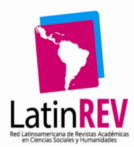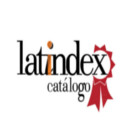¿Estamos ante el fin de la escuela? Transformaciones tecnológicas y pedagógicas en la pospandemia
Resumo
En este artículo se analizan los argumentos sobre el fin de la escuela a la luz de la experiencia de la pandemia y desde la perspectiva de la teoría de los medios. Se aborda la escuela como un ecosistema de medios y un ensamble socio-técnico dinámico, que está siendo reorganizado por los medios digitales. Con estas conceptualizaciones, se analizan mapas o diagramas realizados por docentes argentinos durante la pandemia sobre su entorno socio-material. En esas visualizaciones se observa la reorganización de la “escuela sin paredes”, y se debaten algunos de sus efectos sobre la organización escolar y el trabajo docente.Downloads
Referências
Agamben, G. (2020). Requiem por los estudiantes. Blog Artillería Inmanente, 23/05/2020, disponible en: https://artilleriainmanente.noblogs.org/?p=1514
[último acceso Febrero 20, 2022]
Agar, J. (2006). What Difference did Computers Make? Social Studies of Science, 36 (6), 869-907.
Appadurai, A. (2 Abril 2020). Gradual learning, the urgency of knowledge and the connectivity of humanity. UNESCO Futures of Education Ideas LAB. Disponible en: https://en.unesco.org/futuresofeducation/appadurai-gradual-learning-urgency-knowledge
Atkinson, D. (2001). Teachers, Students and Drawings: extending discourses of visuality. Discourse: studies in the cultural politics of education, 22(1), 67-79.
Barrère, A. (2019). De quoi l’Éducation Artistique et Culturelle est-elle la solution? En Barrère, A. y Montoya, N. (dir.), L’éducation artistique et culturelle. Mythes et malentendus. Paris: L’Harmattan, pp. 63-80.
Barrère, A. y Nous, C. (2021). École, travail, loisir. Quand l’éducation scolaire rencontre l’éducation buissonnière. Éducation et sociétés, 45 (1), 161-176.
Bishop, C. (2017). Infiernos artificiales. Arte participativo y políticas del espectador. México DF: T-eoría Taller de Ediciones Económicas.
Caruso, M. (2019). Geschichte der Bildung und Erziehung. Medienentwicklung und Medienwandel. Paderborn: Verlag Brill-Schöningh.
CEPAL-UNESCO (2020). La educación en América Latina y el Caribe ante la COVID-19. Documento disponible en: https://es.unesco.org/fieldoffice/santiago/covid-19-education-alc/monitoreo (último acceso 2 de febrero de 2020)
Chartier, A.-M. (2004). Enseñar a leer y escribir. Una aproximación histórica. México DF: Fondo de Cultura Económica.
Colomina, B. y M. Wigley (2016). Are we human? Notes on an archeology of design. Zürich: Lars Müller Publishers.
Crary, J. (2015). 24/7. El capitalismo tardío y el fin del sueño. Ciudad Autónoma de Buenos Aires: Paidós.
Day Good, K. (2020). Bring the World to the Child. Technologies of Global Citizenship in American Education. Cambridge, MA: The MIT Press.
Dijck, J. van (2016). La cultura de la conectividad. Una historia crítica de las redes sociales. Buenos Aires: Siglo XXI editores.
Dijck, J. van, Poell, Th. y De Waal, M. (2018). The Platform Society. Public Values in a Connective World. Oxford: Oxford University Press.
Dumasy-Rabineau, J., Gastaldi, N., y Serchuk, C. (2019). Quand les Artistes Dessinaient les Cartes. Vues et figures de l’espace français, Moyen ge et Renaissance. Paris: Le Passage-Archives Nationales.
Durler, H. (2015). L’autonomie obligatoire. Sociologie du gouvernement de soi à l’école. Rennes: Presses Universitaires de Rennes.
Educational Facilities Laboratories (1970). New Schools for New Towns. Houston: Rice University-School of Architecture.
Ezpeleta, J. (2004). Innovaciones educativas. Reflexiones sobre los contextos en su implementación. Revista Mexicana de Investigación Educativa, 21, 403-423.
Friesen, N. (2017). The Textbook and the Lecture. Education in the Age of New Media. Baltimore: Johns Hopkins University Press.
Fuentes Cardona, M. G. (2022). El uso del WhatsApp por parte de docentes de educación básica: Un estudio sobre las nuevas arenas de participación docente en México. Tesis de Doctorado en Ciencias en la Especialidad de Investigaciones Educativas, Departamento de Investigaciones Educativas del CINVESTAV, México.
Gitelman, L. (2008). Always already new: Media, history and the data of culture. Cambridge, MA: The MIT Press.
Gitelman, L. (2014a). Paper knowledge. Toward a media history of documents. Durham y Londres: Duke University Press.
Gitelman, L. (2014b). Searching and thinking about searching JSTOR. Representations, 127 (1), 73-82.
Gourlay, L. (2015). Posthuman texts: nonhuman actors, mediators and the digital university. Social Semiotics, 25 (4), 484-500.
Gourlay, L. (2022). Digital masks: screens, selves and symbolic hygiene in online higher education. Learning, Media and Technology, DOI: 10.1080/17439884.2022.2039940
Huhtamo, E. y J. Parikka (2011). Introduction: An archeology of media archeology. En E. Huhtamo y J. Parikka (eds.), Media archeology. Approaches, applications, and implications. Berkeley y Londres: University of California Press, pp. 1-21.
Hunter, I. (1994). Rethinking the School. Subjectivity, Bureaucracy, Criticism. Nueva York: St. Martin’s Press.
Illich, I. (1971). Deschooling Society. Nueva York: Harper & Row.
Jenkins, H., Green, J., y Ford, S. (2013). Spreadable media. Creating value and meaning in a networked culture. New York: New York University Press.
Kittler, F. (1999). Gramophone, film, typewriter. Palo Alto, CA: Stanford University Press.
Latour, B. (2008). Reensamblar lo social. Una introducción a la teoría del actor en red. Buenos Aires: Manantial.
Latour, B. (2021). After Lockdown. A Metamorphosis. Londres: Polity Press.
Manovich, L. (2006). El lenguaje de los nuevos medios de comunicación. La imagen en la era digital. Barcelona: Paidós.
McDowell, P. (2021). Reading McLuhan reading (and not reading). Textual Practice, 35 (9), 1391-1417. DOI: 10.1080/0950236X.2021.1964751
McLuhan, M. (1960a). Classroom without walls. En Carpenter, E. y McLuhan, M. (eds.), Explorations in Communication. Boston: Beacon Press, pp. 1-3.
McLuhan, M. (1960b). Five Sovereign Fingers Taxed the Breath. En Carpenter, E. y McLuhan, M. (eds.), Explorations in Communication. Boston: Beacon Press, pp. 207-208.
McLuhan, M. y Leonard, G. (1967). The future of education: The class of 1989. Look, February 21, 23-24.
Monsiváis, C. (2007). Las alusiones perdidas. México D.F.: Anagrama.
Nespor, J. (1996). Tangled up in school. Politics, space, bodies, and signs in the educational process. Mahwah, NJ: Lawrence Erlbaum Associates.
O'Connor, K. y Yates, L. (2014). Disciplinary representation on institutional websites: changing knowledge, changing power? Journal of Educational Administration and History, 46(1), 1-16, DOI: 10.1080/00220620.2014.855179
Perrotta, C., Gulson, K., Williamson, B. & Witzenberger, K. (2021). Automation, APIs and the distributed labour of platform pedagogies in Google Classroom. Critical Studies in Education, 62(1), 97-113. DOI: 10.1080/17508487.2020.1855597
Peters, J. D. (2015). The marvelous clouds. Toward a philosophy of elemental media. Chicago, IL: The University of Chicago Press.
Prosser, J. y Burke, C. (2008). Image-Based Educational Research: Childlike Perspectives. En J.G. Knowles y A.L. Cole (eds). Handbook of the Arts in Qualitative Research: Perspectives, Methodologies, Examples and Issues. Londres: Sage, pp. 407–419.
Sadin, E. (2017). La humanidad aumentada. La administración digital del mundo. Buenos Aires: Caja Negra Editorial.
Sadin, É. (2020). La inteligencia artificial o el desafío del siglo. Anatomía de un antihumanismo radical. Buenos Aires: Caja Negra.
Simons, M. y Masschelein, J. (2014). En defensa de la escuela. Una cuestión pública. Buenos Aires: Miño Editores.
Statista (2022). Mobile internet usage worldwide - statistics & facts. Feb 22, 2022, disponible en: https://www.statista.com/topics/779/mobile-internet/#topicHeader__wrapper (último acceso 24 de febrero de 2022).
Sterne, J. (2011). The Theology of Sound: A Critique of Orality. Canadian Journal of Communication, 36 (2), 207-225. DOI: https://doi.org/10.22230/cjc.2011v36n2a2223
Strathern, M. (1996). Cutting the Network. The Journal of the Royal Anthropological Institute, 2 (2), 517-535.
Waquet, F. (2015). L’ordre matériel du savoir. Comment les savants travaillent, XVIe-XXIe siècles. Paris: CNRS Éditions.
Zielinski, S. (2008). Deep time of the media: Towards an archeology of hearing and seeing by technical means. Cambridge, MA: The MIT Press.
Zimmerman, J. (2020). Coronavirus and the Great Online-Learning Experiment. Chronicle of Higher Education, March 10, 2020, disponible en:
https://www.chronicle.com/article/coronavirus-and-the-great-online-learning-experiment/ [ultimo acceso Febrero 20, 2022]
Zuboff, S. (2019). The age of surveillance capitalism: The fight for a human future at the new frontier of power. New York: Public Affairs.














